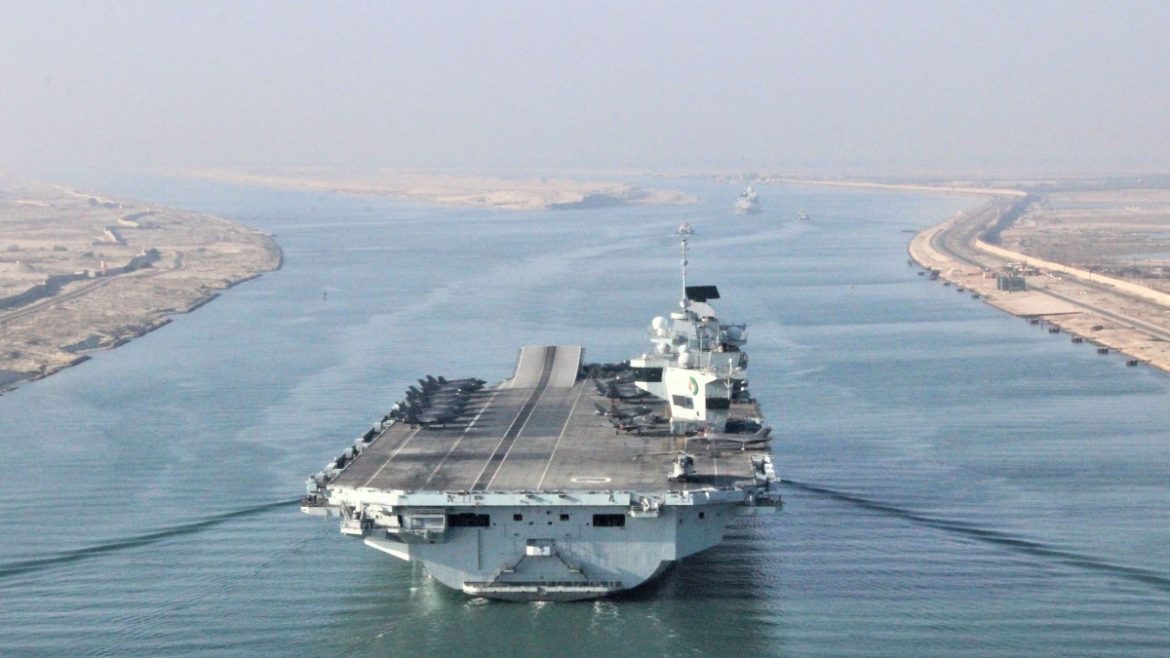The UK’s Carrier Strike Group (CSG) is currently sailing through the Indian Ocean Region. Jagjeet Singh Grewal is a leading engineering technician in the Royal Navy and embodies the unique living bridge that exists between the UK and India. The Carrier Strike Group has entered the Indian Ocean and preparing to meet the Indian Navy for a series of routine maritime exercises.

 Jagjeet Singh Grewal
Jagjeet Singh Grewal

Serving aboard the fifth-generation aircraft carrier, Grewal works in the Marine Engineering Department and is responsible for maintaining aviation fuel to the highest standard. He also maintains fuelling pumps on the flight deck so that the F-35B jets, Merlin helicopters, and other aircrafts can operate to their optimum capacity. Currently settled in the UK, Grewal has a long family history in the Indian military. He shares, “My grandfather and grandfather-in-law served alongside the British Army in the Second World War and received a Mention in Dispatches, Burma Star, Africa Star, War Medal and Defence Medal. My father served in the Indian Air force and currently my wife’s brother and uncle are serving in the Indian Navy.”
“I am focused on doing my job to the highest standards, but it is good to know I am maintaining my family links while working with the Indian military,” Grewal added.
As the CSG sails in the Indian Ocean, engaging with its allies on its 26,000 nautical miles long maiden deployment, Grewal feels a special delight being part of the crew, training in the waters near to his ancestral home. The UK and India benefit from a unique living bridge of people, ideas, institutions, arts and culture. This includes an Indian diaspora of over 1.5 million people (2011 census) in the UK, contributing significantly to the UK’s prosperity via interests in business, politics, academia, medicine and the arts.
UK CARRIER STRIKE GROUP REACHES INDIAN OCEAN REGION
The United Kingdom Carrier Strike Group (CSG) 2021, led by HMS Queen Elizabeth, has sailed into the Indian Ocean Region, having recently transited the Suez Canal. Following a series of successful engagements and operations in the Mediterranean, it is now sailing East across the Indian Ocean towards India. It will then meet with ships from the Indian Navy to conduct routine maritime exercises. The deployment represents the UK’s deepening diplomatic, economic and security ties with India and in the Indo-Pacific region. It also demonstrates both the UK’s support for the freedom of passage through vital trading routes and for a free, open and inclusive order in the Indo-Pacific.
On this occasion, the British Defence Secretary Ben Wallace said, “The UK Carrier Strike Group deployment is a major moment for UK defence as we develop this cutting edge capability across the globe. The group is sailing the Indian Ocean and will shortly conduct exercises with the Indian Navy, building on our already strong partnership with an important ally and friend.” He added, “The deployment illustrates the UK’s enduring commitment to global defence and security, strengthening our existing alliances and forging new partnerships with like-minded countries as we face up to the challenges of the 21st century.” The British Foreign Secretary Dominic Raab emphasised, “The Carrier Strike Group deployment marks the start of a new era of defence cooperation with allies in India and the Indo-Pacific. By visiting 40 countries and working alongside our partners, the UK is standing up for democratic values, seizing new trading opportunities and tackling the shared threats we face together.” He added, “The deployment will interact with India, strengthening our already deep ties for the benefit of both our peoples’ security and prosperity.”
From defending democratic values and tackling shared threats, to seizing new trade opportunities through engagements with Singapore, the Republic of Korea, Japan, India and others, the deployment marks a step-change in UK engagement in the region. The UK is already investing significantly in the region by seeking ASEAN Dialogue Partner status, kicking off negotiations to join the Comprehensive and Progressive Agreement for Trans-Pacific Partnership (CPTPP) and rapidly progressing trade talks with Australia, New Zealand and India. The British High Commissioner to India, Alex Ellis, said, “The Carrier Strike Group is a powerful demonstration of our commitment to the security of India and the Indo- Pacific. Its arrival follows the UK’s first International Liaison Officer joining the Indian Navy’s Information Fusion Centre-Indian Ocean Region in Gurugram. Today marks another step towards delivering the ambition set out jointly by our Prime Ministers in the 2030 Roadmap, bringing our countries, economies and people closer together.”
As part of its maiden operational deployment, the CSG will sail over 26,000 nautical miles, engaging with 40 countries from the Mediterranean to the Indo-Pacific and back again. This deployment will provide tangible reassurance and security to the UK’s friends and a credible deterrence to those who seek to undermine global security. As the spearhead of UK’s Joint Expeditionary capability and a cornerstone of the UK’s conventional military deterrent, the CSG comprises nine ships, 32 aircraft and one submarine and is manned by 3,700 sailors, aviators and marines from the combined forces of the UK, US and the Netherlands. The fifth-generation HMS Queen Elizabeth carrier, at 65,000 tonnes, is the largest surface vessel ever constructed in the UK. Taller than Niagara Falls, her propellers generate the power of 50 high-speed trains. She leads six Royal Navy ships, a Royal Navy submarine, a US Navy destroyer and a frigate from the Netherlands in the largest concentration of maritime and air power to leave the UK in a generation. It is equipped with the fifth-generation F-35B Lightning multi-role aircrafts. They are being jointly crewed by the Royal Air Force, Royal Navy and the US Marine Corps.
The post INDIAN-ORIGIN CREW MEMBER ON UK’S CARRIER STRIKE GROUP appeared first on The Daily Guardian.

